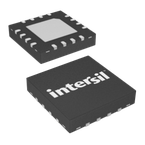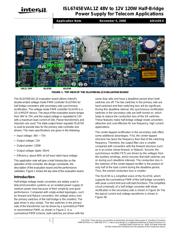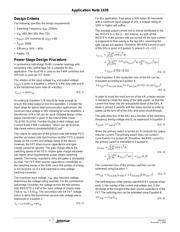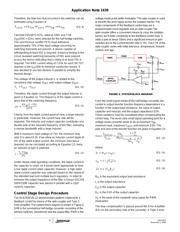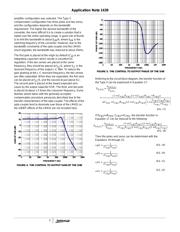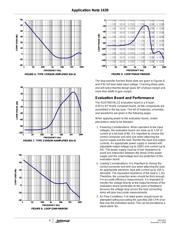herunterladen

1
®
AN1439.0
ISL6745EVAL1Z 48V to 12V 120W Half-Bridge
Power Supply for Telecom Applications
The ISL6745EVAL1Z evaluation board utilizes Intersil’s
double-ended voltage-mode PWM controller ISL6745A for
half bridge converters with secondary side synchronous
rectification. The voltage mode PWM controller ISL6745 is a
10 Ld MSOP device. The input of the evaluation board ranges
from 36V to 75V, and the output voltage is regulated to 12V
with a maximum load current of 10A. Planar transformers and
inductors are used. The triple-output linear regulator ISL6720
is used to provide bias for the primary side controller and
drivers. The main specifications are given in the following:
• Input voltage: 36V ~ 75V
• Output voltage: 12V
• Output power: 120W
• Output voltage ripple: 50mV
• Efficiency: about 90% at full load rated input voltage
This application note will give a brief introduction on the
operation of the converter, the design constraints, the
description of the evaluation board and the performance
validation. Figure 1 shows the top view of the evaluation board.
Introduction
Half-bridge voltage mode converters are widely used in
telecommunication systems as an isolated power supply of
medium power level because of their simplicity and good
performance. Compared with single-ended topologies, such
as forward and flyback converters, the voltage stress over
the primary switches of the half-bridge is the smallest. The
gate driver is also simple. The two switches in the primary
side of the transformer can be driven by a symmetrical PWM
or asymmetrical PWM, as shown in Figure 2. In a
symmetrical PWM scheme, both switches are driven with the
same duty ratio and have a deadtime period when both
switches are off. The two switches in the primary side are
hard-switched and their switching loss will be significant.
During this deadtime interval, the synchronous rectification
switches in the secondary side are both turned on, which
helps to reduce the conduction loss of the SR switches.
These features make half-bridge voltage mode converters
attractive and cost-effective for low frequency, high current
applications.
The center-tapped rectification in the secondary side offers
some additional advantages. First, the center-tapped
structure has twice the frequency than that of the switching
frequency. Therefore, the output filter size is smaller
compared with converters with the forward structure (such
as in an active clamp forward, or flyback). Second, the
synchronous rectifier FETs are driven by the voltages from
the auxiliary windings, which ensures that both switches are
on during such deadtime intervals. The conduction loss in
the switches of the center-tapped rectifier is the product of
only half of the load current during the deadtime period.
Thus, the overall conduction loss is smaller.
The ISL6745 is a simplified vision of the ISL6742, which
supports the symmetrical PWM of the half-bridge converters
with peak current limit and soft-start functions. The simplified
circuit schematic of a half bridge converter with diode
rectification in the secondary side is shown in Figure 2A The
the typical current and voltage waveforms is shown in
Figure 2B.
ISL6720 ISL6745
HIP2101
SR
UVLO, OVP
FIGURE 1. TOP VIEW OF THE ISL6745EVAL1Z EVALUATION BOARD
Application Note November 5, 2008
CAUTION: These devices are sensitive to electrostatic discharge; follow proper IC Handling Procedures.
1-888-INTERSIL or 1-888-468-3774
| Intersil (and design) is a registered trademark of Intersil Americas Inc.
Copyright Intersil Americas Inc. 2008. All Rights Reserved
All other trademarks mentioned are the property of their respective owners.
Verzeichnis
- ・ Blockdiagramm on Seite 2 Seite 4 Seite 12
- ・ Anwendungsbereich on Seite 1

